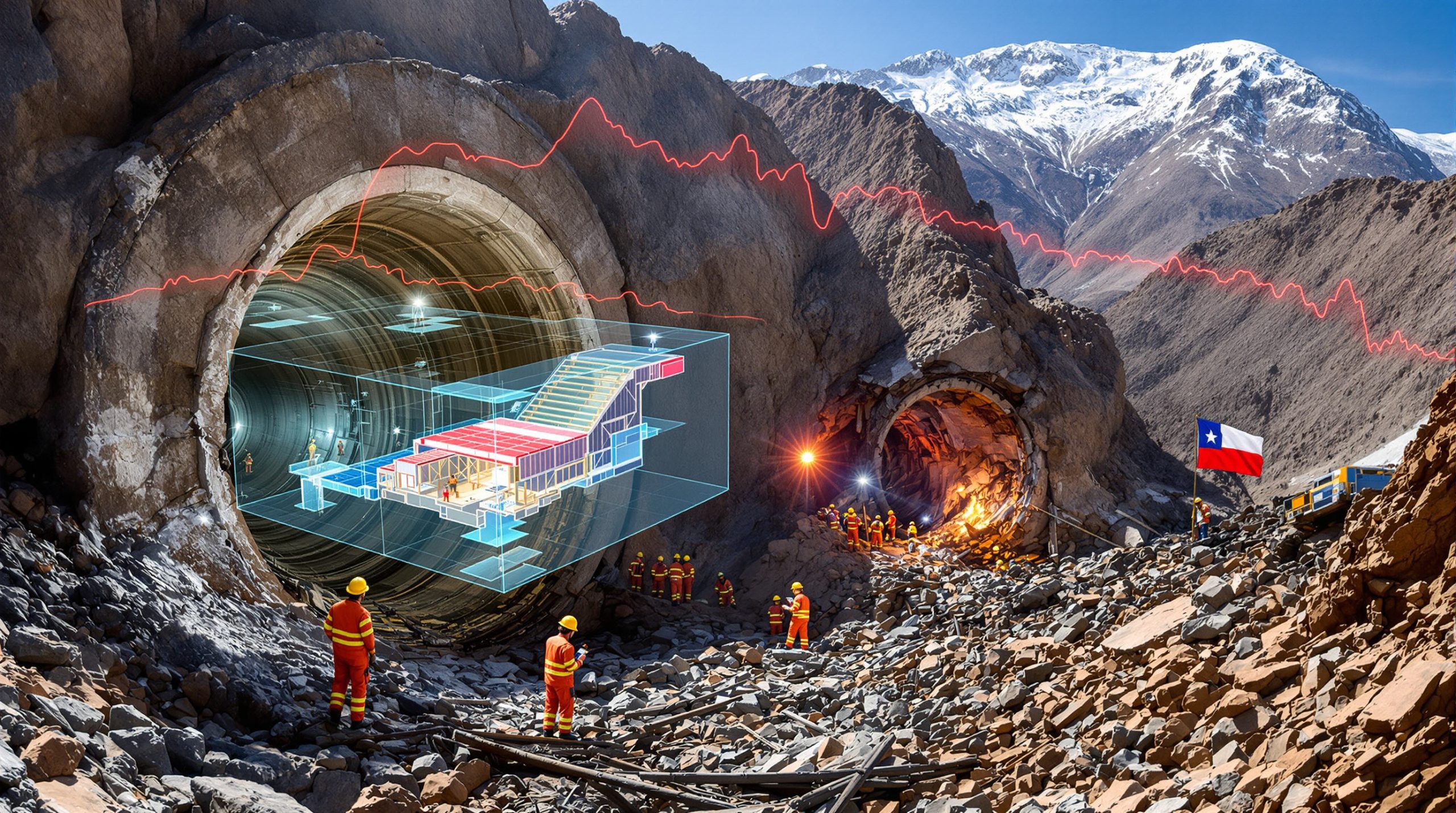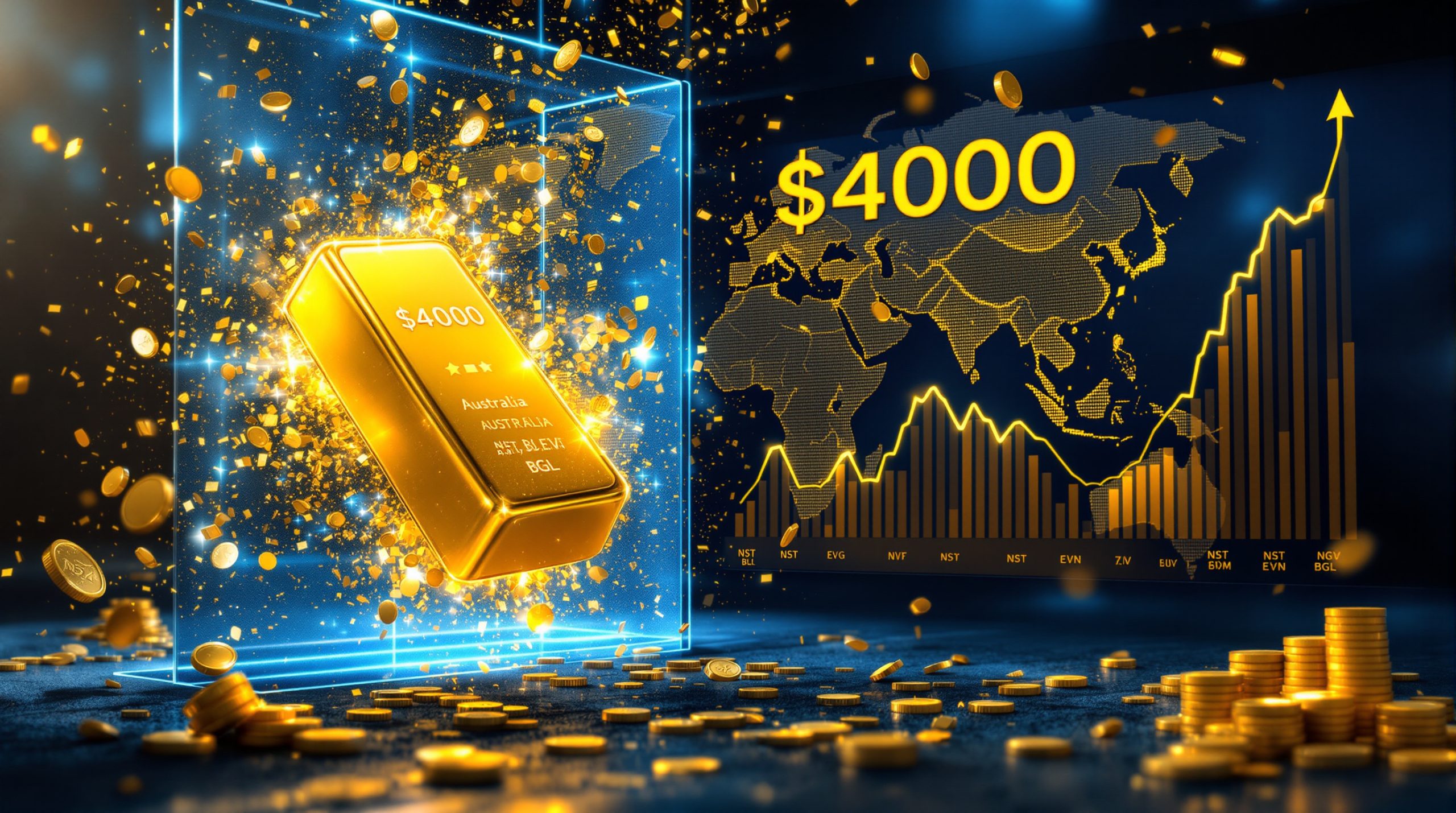Tungsten's Critical Role in Global Defence and Technology
Tungsten stands as one of the most strategically vital metals in modern military and industrial applications due to its extraordinary physical properties. With the highest melting point of all metals (3,422°C), exceptional density (19.3 g/cm³), and remarkable hardness, tungsten has become irreplaceable in applications where extreme conditions must be withstood.
These unique properties have positioned tungsten as a cornerstone material in advanced defense systems, aerospace technologies, and cutting-edge industrial applications. Its strategic importance continues to grow as global tensions rise and supply chain crisis in defence minerals become increasingly apparent.
How Does Tungsten Transform Modern Military Capabilities?
Armor-Penetrating Munitions and Ballistics
Tungsten's exceptional density and hardness make it the material of choice for penetrating the most sophisticated armor systems. Modern militaries rely on tungsten for:
-
Kinetic Energy Penetrators: Tungsten alloy rods that use velocity and density rather than explosives to defeat armored vehicles
-
Anti-Tank Ammunition: Tungsten-carbide cores that can penetrate reinforced steel at distances exceeding 2km
-
Precision-Guided Munitions: Tungsten fragments that maximize damage while minimizing collateral effects
-
High-Density Penetrators: Replacing depleted uranium in many applications, offering comparable performance with reduced environmental concerns
The material's effectiveness in these applications stems from its ability to maintain structural integrity under extreme impact forces while delivering maximum energy transfer to targets. Kinetic energy penetrators using tungsten alloys can achieve velocities exceeding 1,700 m/s, delivering penetration capabilities that exceed depleted uranium alternatives by approximately 5-8% according to ballistic performance testing.
Advanced Protection Systems
Beyond offensive capabilities, tungsten plays a crucial defensive role:
-
Vehicle Armor: Composite systems incorporating tungsten alloys to defeat incoming projectiles
-
Personal Protection: High-performance body armor components utilizing tungsten's density-to-weight advantages
-
Fragmentation Shields: Protective barriers in military installations and vehicles
-
Radiation Shielding: Critical protection in nuclear-powered vessels and specialized military facilities
These protective applications leverage tungsten's ability to absorb kinetic energy and radiation while maintaining structural integrity under extreme stress. Military armor applications consume an estimated 2,500 metric tons of tungsten annually across NATO countries, with the United States accounting for roughly 40% of this demand.
Aerospace and Missile Technologies
The aerospace sector, particularly military aviation and missile systems, depends heavily on tungsten:
-
Missile Components: Guidance systems, counterweights, and ballast materials
-
Aircraft Counterweights: Precision balance components in control surfaces and rotors
-
Heat-Resistant Components: Engine parts and thermal protection systems for hypersonic vehicles
-
Radiation Shields: Protection for sensitive electronics in space and high-altitude applications
The metal's combination of density, thermal stability, and radiation-blocking properties makes it uniquely suited for these demanding environments. Aerospace industry specialists project that hypersonic vehicle development will create entirely new categories of tungsten demand, particularly for leading edge components and thermal protection systems that require tungsten's unique combination of high-temperature stability and thermal shock resistance.
Where Does Tungsten Enable Technological Innovation?
Electronics and Semiconductor Manufacturing
The electronics industry relies on tungsten for critical components:
-
Integrated Circuit Connections: Tungsten vias and interconnects in microprocessor manufacturing
-
Heat Sinks: Thermal management systems for high-performance computing
-
Electrical Contacts: High-reliability switches and connectors for mission-critical systems
-
Vacuum Tube Filaments: Specialized electronic components for high-power applications
These applications capitalize on tungsten's electrical conductivity, thermal stability, and resistance to electron migration under high current densities. The semiconductor industry consumes approximately 15,000 metric tons of tungsten annually, representing nearly 20% of global tungsten demand. This usage has grown by 8-12% annually over the past five years, driven by increasing chip complexity and miniaturization requirements.
Semiconductor engineering specialists note that tungsten's role extends beyond simple electrical connections to include critical thermal management functions in advanced processor designs. The metal's ability to conduct heat while maintaining electrical integrity becomes increasingly important as chip power densities continue increasing.
Advanced Manufacturing and Precision Tools
Manufacturing precision across industries depends on tungsten-based tools:
-
Carbide Cutting Tools: Ultra-hard implements for machining hardened steels and exotic alloys
-
High-Speed Steel Additives: Enhancing tool performance in extreme cutting conditions
-
Dies and Molds: Precision forming tools for mass production of complex components
-
Mining and Drilling Equipment: Drill bits and cutting surfaces for resource extraction
The exceptional hardness of tungsten carbide (9.5 on the Mohs scale) makes it second only to diamond for cutting applications, while its thermal stability allows sustained operation at high temperatures. Tungsten carbide, formed by combining tungsten with carbon, achieves a hardness rating of 8.5-9.0 on the Mohs scale, making it the material of choice for applications requiring extreme wear resistance.
Emerging Technologies and Green Energy Applications
Tungsten is increasingly vital in next-generation technologies:
-
Wind Turbine Components: Wear-resistant bearings and structural elements
-
Electric Vehicle Systems: High-performance electrical contacts and thermal management
-
Nuclear Fusion Research: Plasma-facing components that withstand extreme temperatures
-
Medical Technologies: Radiation shielding, surgical implements, and imaging equipment
These applications highlight tungsten's versatility and growing importance in addressing contemporary technological challenges. Fusion energy research facilities currently consume approximately 500 metric tons of tungsten annually for plasma-facing components, with this demand projected to reach 2,000 metric tons annually by 2035 as demonstration reactors come online.
The International Thermonuclear Experimental Reactor (ITER) project will utilize over 300 metric tons of tungsten in its divertor components, representing the largest single tungsten application in fusion research. Tungsten's application in plasma-facing components requires specialized fabrication techniques to create materials that can withstand neutron irradiation while maintaining thermal conductivity.
Why Is Global Tungsten Supply a Geopolitical Concern?
China's Dominant Market Position
The global tungsten supply chain faces significant concentration risks:
-
China controls approximately 82% of global tungsten production
-
Chinese companies dominate processing and refining capabilities
-
Export restrictions have been implemented periodically since 2010
-
Price volatility has increased due to supply concentration
This market dominance creates strategic vulnerabilities for Western nations, particularly in defense and high-technology sectors where substitution is difficult or impossible. China processes roughly 65,000 metric tons annually from global production of 79,000 metric tons, creating a significant bottleneck in the global supply chain.
The 2010 Chinese export restrictions led to tungsten price increases of over 300% within six months, demonstrating the market's sensitivity to supply disruptions. These price fluctuations revealed the vulnerability of global manufacturing and defense industries to critical minerals energy security disruptions in critical minerals.
Western Supply Chain Vulnerabilities
Nations outside China face growing challenges in securing reliable tungsten supplies:
-
The United States has not produced significant domestic tungsten since 2015
-
European manufacturers depend on imports for over 95% of their tungsten needs
-
Recycling currently recovers only about 35-40% of tungsten from end-of-life products
-
Strategic stockpiles have diminished as consumption has increased
These vulnerabilities have prompted renewed interest in developing alternative supply sources and improving recycling technologies. The United States imports over 95% of its tungsten requirements, totaling approximately 8,500 metric tons annually. U.S. tungsten consumption reached 9,200 metric tons in 2023, with defence applications accounting for roughly 15% of this total.
Strategic Responses and Diversification Efforts
In response to supply risks, several initiatives are underway:
-
Exploration and development of new tungsten deposits in Australia, Canada, and South Korea
-
Investment in advanced recycling technologies to recover tungsten from industrial waste
-
Development of strategic partnerships between consuming nations and alternative producers
-
Research into substitute materials for less critical applications
These efforts reflect growing recognition of tungsten's strategic importance and the risks associated with supply chain concentration. Alternative tungsten sources outside China represent approximately 35% of known global reserves, totaling roughly 1.2 million metric tons, providing potential alternatives for diversifying supply.
Geopolitical analysts emphasize that tungsten's supply concentration creates vulnerability points similar to those experienced with rare earth elements in the 2010-2012 period. The difference lies in tungsten's direct military applications, which makes supply disruptions a national security rather than purely economic concern.
What Does the Future Hold for Tungsten Applications?
Military Modernization Programs
Global defense spending continues to drive tungsten demand:
-
Next-generation armored vehicle programs requiring advanced penetrators and protection systems
-
Hypersonic missile development demanding heat-resistant tungsten components
-
Directed energy weapon systems utilizing tungsten's thermal properties
-
Autonomous defense platforms incorporating tungsten in various subsystems
These programs suggest sustained or increasing military demand for tungsten through the 2030s. Military modernization programs across NATO countries are expected to increase defense-related tungsten consumption by 25-30% over the next decade, driven by advanced weapons platforms and protection systems.
Tungsten's role in directed energy weapon systems is particularly noteworthy, as these systems require exceptional thermal management capabilities to handle the extreme heat generated by high-power lasers and particle beams. The metal's thermal conductivity and stability make it ideal for these applications.
Technological Evolution and New Applications
Emerging technologies continue to find new uses for tungsten's unique properties:
-
Quantum Computing Components: Leveraging tungsten's superconducting characteristics
-
Advanced Nuclear Reactor Designs: Utilizing tungsten's radiation resistance
-
Biomedical Implants: Benefiting from tungsten's biocompatibility and imaging properties
-
Space Exploration Systems: Requiring materials that perform in extreme environments
These applications represent growth areas that may further strain global tungsten supplies. The space industry's tungsten consumption is expected to triple by 2030, driven by increasing satellite deployments and deep space missions that require materials capable of withstanding extreme conditions.
Tungsten's work function of 4.55 eV provides optimal electron emission characteristics for specialized electronic devices, particularly in high-power vacuum tubes used in radar and communications systems. This property also makes tungsten valuable for quantum computing applications that rely on precise electron behavior.
Supply Chain Resilience Initiatives
Governments and industries are increasingly focused on securing tungsten supplies:
-
Defence-critical materials strategy specifically addressing tungsten in the US, EU, Japan, and Australia
-
Public-private partnerships to develop domestic processing capabilities
-
International agreements to ensure access to tungsten resources
-
Investment in substitution research for less critical applications
These initiatives reflect growing recognition of tungsten's irreplaceable role in both defense and civilian technologies. Current U.S. strategic stockpiles contain approximately 31,000 metric tons of tungsten materials, sufficient for roughly 3.5 years of consumption at current rates, but these reserves would be quickly depleted in a conflict scenario.
Energy sector analysts note that tungsten's role in advanced nuclear reactor designs positions it as a critical material for next-generation power systems, particularly in small modular reactor (SMR) applications where space constraints demand high-performance materials capable of withstanding radiation exposure over extended operational periods.
How Can Tungsten Supply Chains Be Secured?
Developing Alternative Sources
Several promising approaches may help diversify tungsten supplies:
-
Reactivation of mothballed mines in traditional producing regions
-
Development of new extraction technologies for lower-grade deposits
-
Exploration in politically stable jurisdictions with favorable mining regulations
-
Recovery from mining waste and tailings from historical operations
These approaches could significantly reduce dependence on dominant suppliers while creating economic opportunities in developing regions. South Korea's development of the Sangdong tungsten mine represents a significant alternative supply source, with projected annual production of 2,900 metric tons starting in 2024.
Mining industry experts emphasize that tungsten ore grades in undeveloped deposits are typically 30-50% lower than current Chinese operations, requiring more sophisticated processing technologies and higher capital investments. However, these challenges are technically solvable with current metallurgical knowledge and equipment.
Advancing Recycling Technologies
Improved recycling represents a significant opportunity:
-
Enhanced collection systems for tungsten-containing scrap
-
Advanced separation technologies for complex end-of-life products
-
Direct recycling processes that maintain tungsten's valuable properties
-
Economic incentives to increase recycling rates across industries
Effective recycling could potentially supply 50-60% of tungsten demand, significantly reducing primary production requirements. Current recycling operations recover approximately 28,000 metric tons of tungsten annually from industrial waste streams, representing 35% of total consumption.
Recycling specialists note that breakthrough technologies in selective leaching and electrochemical processing could potentially increase tungsten recovery rates to 70-80%, effectively creating a "virtual mine" equivalent to 15,000-20,000 metric tons of annual production. These advanced techniques use hydrometallurgical processes with alkaline leaching followed by solvent extraction to recover tungsten from complex materials with purities exceeding 99.9%.
International Cooperation and Strategic Partnerships
Collaborative approaches offer additional security:
-
Joint ventures between consuming nations and resource-rich countries
-
Technology transfer to develop processing capabilities in diverse regions
-
Coordinated stockpiling strategies among allied nations
-
Shared research into substitution and efficiency improvements
These cooperative measures can help distribute risk while ensuring reliable access for critical applications. Canada's Sisson tungsten-molybdenum project represents a potential 2,000 metric ton annual tungsten source with an estimated mine life of 27 years, highlighting the potential for new production in politically stable jurisdictions.
Advanced flotation techniques utilizing selective collectors can achieve tungsten concentrate grades of 65-70% WO₃ from low-grade ores containing 0.2-0.3% tungsten. These processing improvements enable economic extraction from previously sub-marginal deposits, potentially expanding the global resource base.
FAQ: Understanding Tungsten's Strategic Importance
What makes tungsten irreplaceable in military applications?
Tungsten's unique combination of extreme density, hardness, and heat resistance makes it virtually impossible to replace in applications like armor-piercing ammunition, radiation shielding, and high-temperature components. No other material offers the same performance characteristics across these critical properties.
The material's crystal structure consists of a body-centered cubic lattice that provides exceptional mechanical stability under stress. This fundamental structural characteristic explains why tungsten maintains its properties under conditions that cause other materials to fail.
How does tungsten compare to alternatives like depleted uranium?
While depleted uranium offers similar density (19.1 g/cm³ compared to tungsten's 19.3 g/cm³), tungsten avoids the radiological concerns, potential environmental impacts, and political controversies associated with uranium. This makes tungsten preferable in many military and civilian applications despite slightly higher production costs.
Military procurement experts emphasize that tungsten's advantages extend beyond raw performance metrics to include logistical benefits, particularly the elimination of radioactive handling procedures required for depleted uranium alternatives. This simplification reduces training requirements and operational complexity in field conditions.
Why can't technology companies simply substitute other materials?
Tungsten's unique properties—particularly its melting point (highest of all metals), hardness (approaching diamond in some compounds), and density (comparable to gold)—make substitution extremely difficult. Alternative materials typically sacrifice performance, reliability, or longevity, making them unsuitable for critical applications.
Materials engineering experts note that tungsten's thermal stability stems from its electronic structure, which requires extraordinary energy to disrupt atomic bonds. This fundamental characteristic underpins its performance in extreme environments where other materials fail catastrophically.
What impact would a tungsten supply disruption have?
A significant disruption to tungsten supplies would severely impact defense production, semiconductor manufacturing, and precision engineering worldwide. Critical military systems would face production delays, high-technology manufacturing would experience component shortages, and industrial productivity would decline as cutting tools wear out without replacement.
The global military tungsten consumption represents approximately 12-15% of total tungsten demand, totaling roughly 8,000-10,000 metric tons annually. A prolonged supply disruption would impact not only new production but also maintenance and replenishment of existing systems, potentially affecting military readiness.
How are recycling efforts helping address supply concerns?
Current recycling recovers approximately 35-40% of tungsten from end-of-life products, primarily from industrial cutting tools and mining equipment. Advanced recycling technologies and improved collection systems could potentially increase this to 50-60%, significantly reducing dependence on primary production sources.
Advanced recycling facilities capable of processing complex tungsten-containing alloys require investments of $50-100 million per facility but offer compelling economic returns while reducing supply vulnerability. These facilities use advanced pyrometallurgical processes under development that could potentially increase recovery rates to 60-70%.
Conclusion: Tungsten's Enduring Strategic Significance
Tungsten remains one of the most critically important metals for both defense and advanced technology applications, with no viable substitutes for many of its key uses. Its unique properties make it irreplaceable in applications ranging from kinetic energy penetrators to semiconductor manufacturing, while its concentrated supply chain creates significant strategic vulnerabilities.
As global tensions rise and technology continues to advance, securing reliable access to tungsten has become a matter of national security for Western nations. Efforts to diversify supply chains, improve recycling, and develop alternative sources will likely accelerate as recognition of tungsten's strategic importance continues to grow.
The metal's critical role in both military systems and civilian technologies ensures that tungsten will remain at the center of strategic resource discussions for decades to come, with significant implications for global trade, technology development, and Australia's strategic reserve capabilities. Furthermore, the establishment of a critical raw materials facility could help address many of the supply concerns surrounding this vital resource.
Disclaimer: The information provided in this article is for educational purposes only and should not be construed as investment advice. The tungsten in global defence and technology market is subject to significant price volatility and geopolitical factors that can impact supply and demand dynamics. Readers should conduct their own research or consult with qualified professionals before making investment decisions related to critical mineral markets.
Ready to Capitalise on Critical Mineral Opportunities?
Stay ahead of the market with real-time alerts on significant ASX mineral discoveries, including strategic metals like tungsten, through Discovery Alert's proprietary Discovery IQ model. Visit the discoveries page to understand how major mineral discoveries can deliver exceptional returns, and begin your 30-day free trial today.




